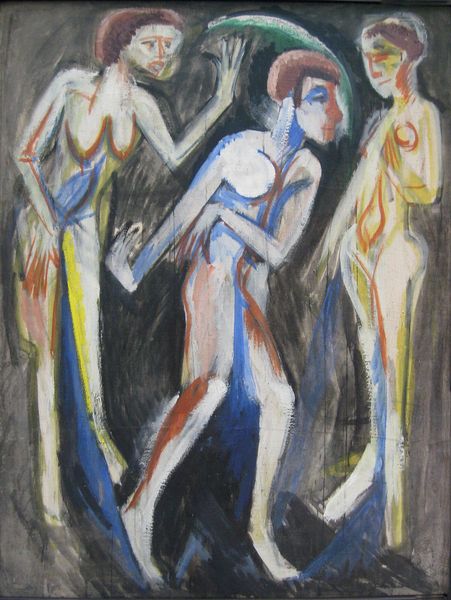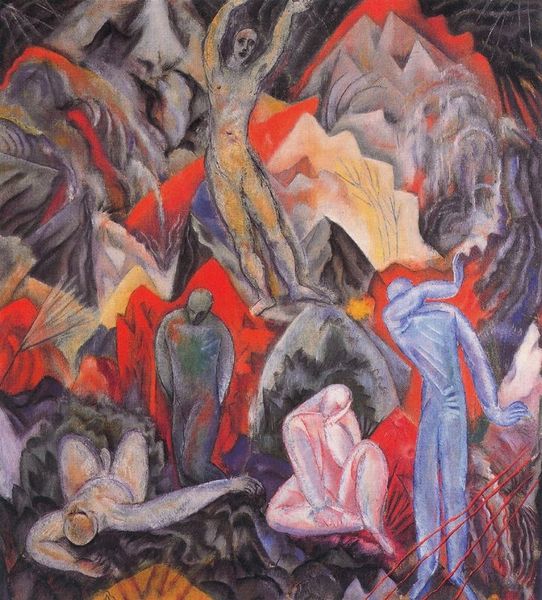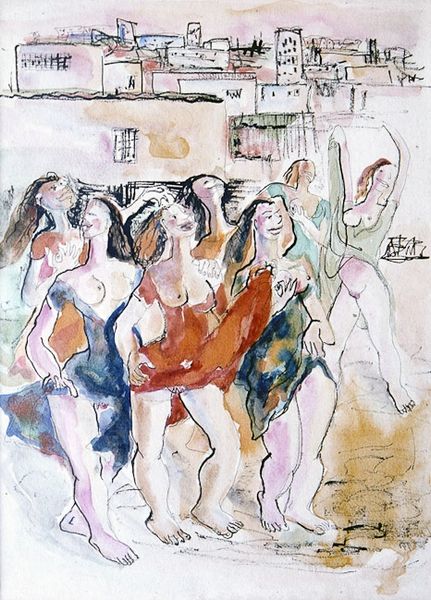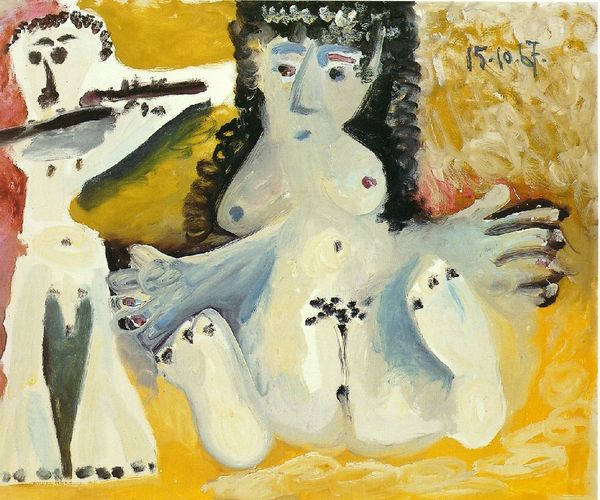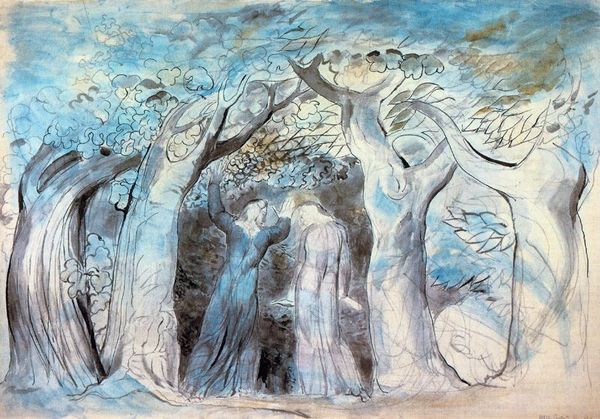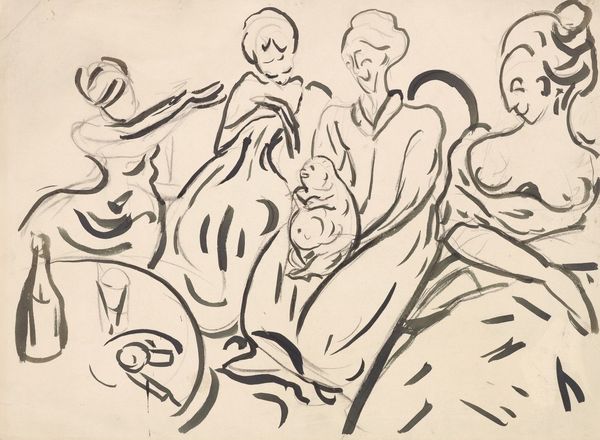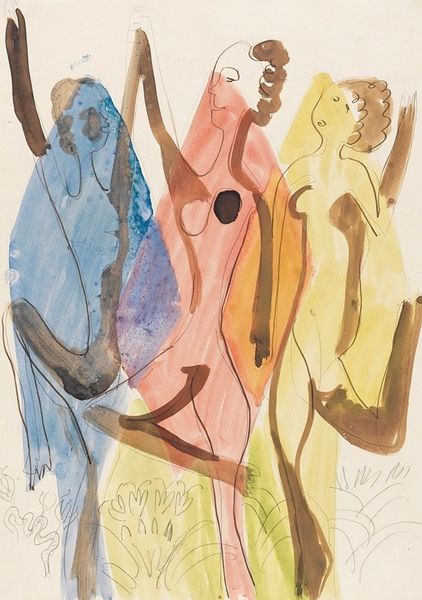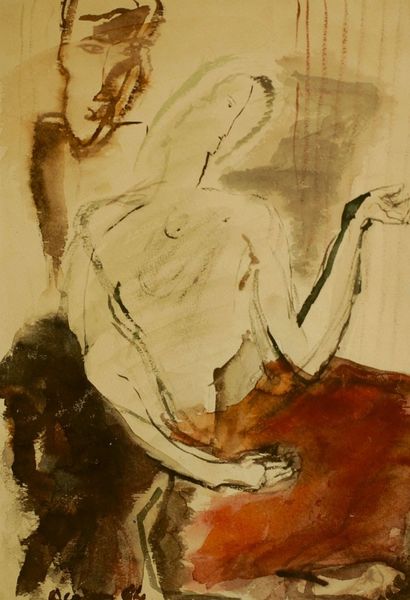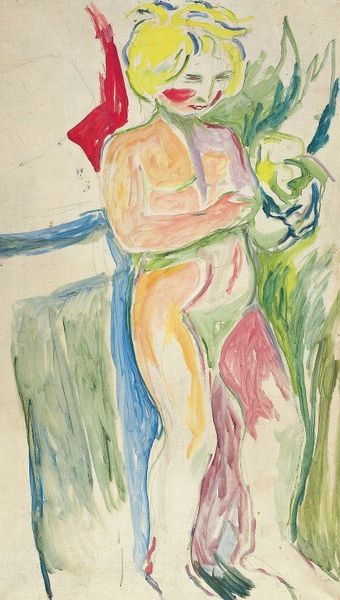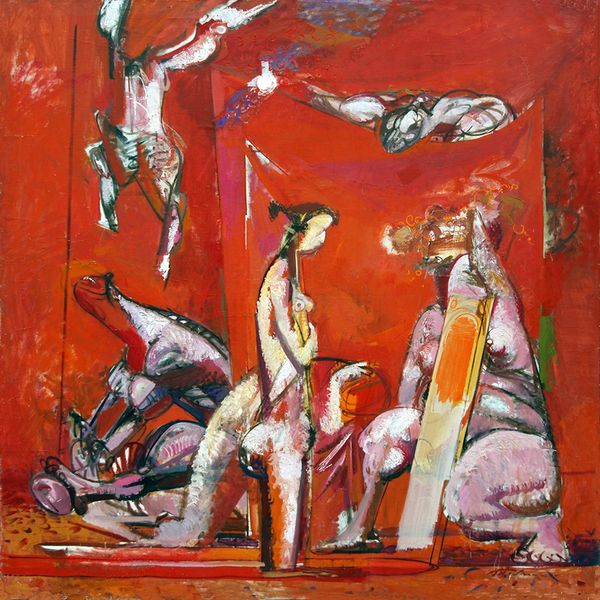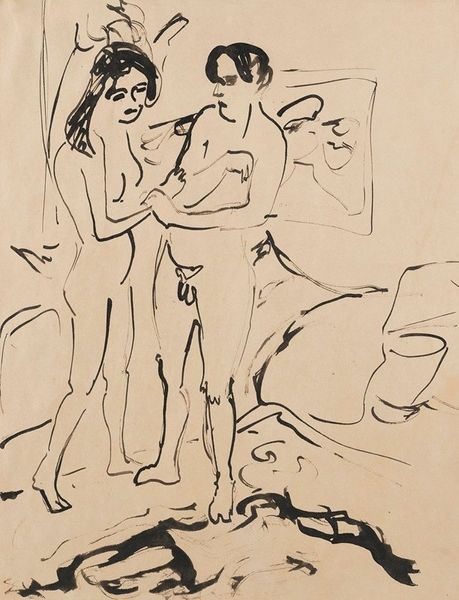
drawing, pen, charcoal
#
portrait
#
drawing
#
cubism
#
figuration
#
female-nude
#
intimism
#
pen
#
charcoal
#
history-painting
#
nude
Copyright: Public domain US
Curator: This is a preparatory study for Pablo Picasso’s pivotal painting, “Les Demoiselles d’Avignon,” or, “The girls of Avignon,” created in 1907 using charcoal and pen. Editor: Immediately, I notice how unfinished the figures look, the sketchiness giving them a ghostly, fragmented appearance. It’s… unsettling. Curator: And yet, these fragmented forms were born from intense labor. Picasso completed hundreds of studies before even starting on the large canvas. Think about the materiality here: the coarseness of charcoal against the smooth paper, and how he leverages these simple materials to suggest form and volume. It really emphasizes the means of production. Editor: That production took place within a specific societal framework: early 20th century Europe grappling with colonialism, anxieties about female sexuality, and emerging avant-garde movements. These figures, often seen as simply an exploration of form, should also be read as complex representations of the female body as object, and the exoticization of African art as fetish, both being 'consumed' in this historical moment. Curator: I'd push back on that slightly. The figures are intentionally deconstructed, right? It's not about literal representation, it's about challenging our perception of reality through fractured perspectives and geometric shapes. I’m interested in the production process, the visible layering, and how this undermines any simple, singular meaning we might try to attach. Editor: But that "challenge" occurred within a power dynamic. Picasso was appropriating and recontextualizing cultural objects from colonized lands, participating, intentionally or not, in the erasure of their original context. What looks like formal experimentation is simultaneously a negotiation of the relationship between artist, subject, and empire. These figures are not just objects on display, they're being made into one. Curator: I see that point; it's less about the deconstruction itself, and more about the 'who' and the 'how'. Whose labor gets recognized in this act? Which perspectives dominate? This lens asks that we don't just accept innovation at face value, that we interrogate the mechanisms behind its making. Editor: Exactly. Art is not made in a vacuum. Recognizing these contexts, asking these questions, forces us to confront the complexities and contradictions inherent in creative production. Curator: That deeper investigation reminds me to go beyond the final, finished image, and value what's at stake with these materials. Editor: Indeed. This study encourages a re-evaluation of the complex interplay between form, power, and representation.
Comments
No comments
Be the first to comment and join the conversation on the ultimate creative platform.

